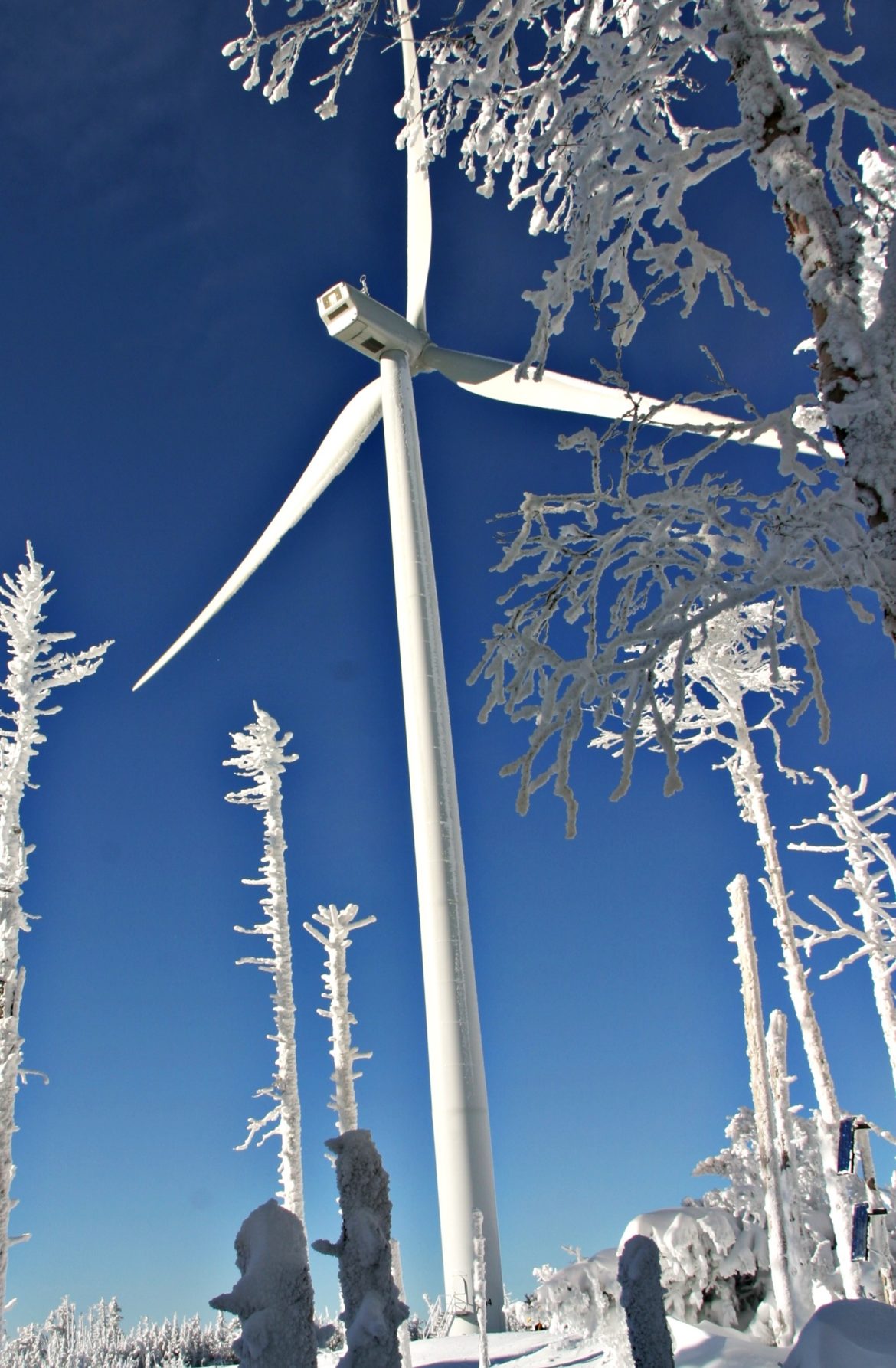By Chris Jensen,
InDepthNH.org
Researchers who worked near the 400-foot high wind turbines on peaks above the proposed Balsams ski area say there is reason to be worried about people getting too close: They saw chunks of ice being thrown and found ice craters and broken saplings 930 feet from a turbine.
Their information highlights one of the smaller, unresolved issues as developer Les Otten tries to reopen the resort, a move seen as providing a huge economic boost to the North Country: how close should skiers get to those wind turbines?
In 2009 when the wind turbines were approved by the state’s Site Evaluation Committee, operating them was contingent on a safety condition: people were to be discouraged from getting within 1,300 feet.
Concerns included a mechanical failure that could send pieces of metal flying or under some conditions in winter, the huge blades collecting and then shedding ice. Both are rare, but they could be deadly, experts say.
But Otten wants to provide the best skiing in New England and that means having the longest runs possible. So, his plan calls for trails or lifts within 1,300 feet of six of the turbines.
Otten’s position is that there is no danger because when the weather indicates that ice could form on the blades, the wind turbines would be shut down.
“The well-being of our resort guests will always be our highest priority. On the rare instances when turbine icing may occur, we will work cooperatively with Granite Reliable Power to ensure safety,” Balsams’ spokesman Scott Tranchemontagne said.
But keeping people away from the turbines seems like a good idea, according to researchers who were surveying the property in December 2014 as part of a project for the Society for the Protection of New Hampshire Forests.
“It appears the standard cautionary setback of 1,250 feet from trails or other high-use areas was warranted,” according to their report, which was finished in November 2015.
That 1,300-foot limit adopted by the Site Evaluation Committee was based on the recommendation of Vestas Wind Systems, which made the turbines. Vestas no longer uses the 1,300-foot limit. Instead, it says an expert should examine each site and make a recommendation.
Tranchemontange says the Balsams has examined the site and has a safety plan that includes “protocols to allow for limiting either resort or turbine operations as necessary to alleviate any concerns due to icing events.”
Otten’s redevelopment effort is not bound by the 1,300-foot limit because it applies to the owner of the wind farm, Brookfield Renewable.
But if Brookfield Renewable wants to allow skiers within 1,300 feet it will require getting permission from the Site Evaluation Committee to change that safety condition, Michael Iacopino, the lawyer for the Site Evaluation Committee, told New Hampshire Public Radio earlier this year.
Andy Davis, a spokesman for Brookfield Renewable, said as plans for the resort are finalized “we will continue to evaluate all aspects of the project and work with all necessary regulators and stakeholders.”
He said Brookfield also plans “to keep an open dialogue with the developer of the Balsams in order to ensure our focus on public safety is always a priority and at the forefront of any discussion.”
Pamela Monroe, the administrator of the Site Evaluation Committee, has the authority to conduct compliance inspections or investigate if a complaint is received.
The wind turbines are also an issue facing the Coos Planning Board, which is required to review the development plans, including the ski expansion.
The planning board’s attorney, Bernard Waugh, says the board lacks the authority to enforce the 2009 safety directive from the state’s Site Evaluation Committee.
But Waugh told the board it has the authority “to impose any conditions you think necessary to protect the skiing public from any perceived dangers relating to the wind towers.”
Some ski resorts have wind turbines nearby. In Massachusetts Jiminy Peak keeps skiers 1,000 feet from its 253-foot wind turbine, an official said. That is 200 feet farther than the 800 feet safety zone recommended by GE, which manufactures the turbine.





